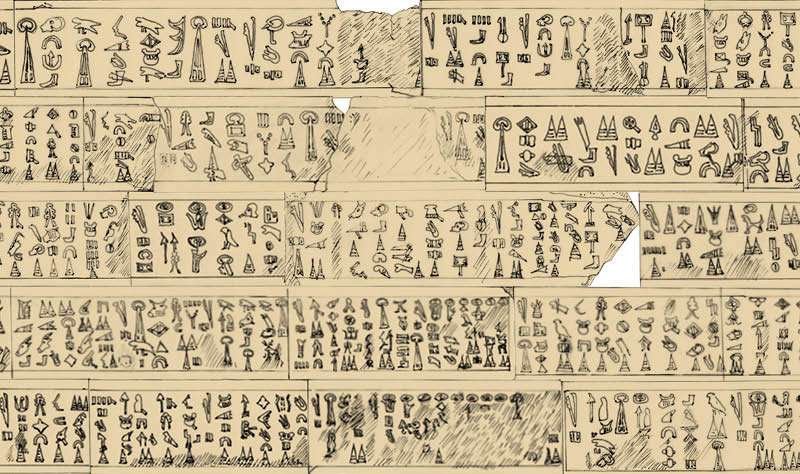Invasion Of Mysterious Sea People – Enigmatic 3,200-Year-Old Luwian Hieroglyphic Inscription Sheds New Light On Ancient Puzzle
AncientPages.com - In 1878, archaeologists discovered a stone slab covered with ancient symbols in modern Turkey. The 29-meter-long bears the longest known hieroglyphic inscription from the Bronze Age. It is a Luwian hieroglyphic inscription and only a handful of scholars have been able to decipher it.
This enigmatic stone describes the events at the end of the Bronze Age in the Eastern Mediterranean and sheds new light on one of the greatest puzzles of Mediterranean archaeology.
Although many theories have been presented there is little solid information about the mysterious Sea People.
Their nationality remains a mystery as the only records we have of their activities are mainly Egyptian sources who only describe them in terms of battle (such as the record from the Stele at Tanis which reads, in part, “They came from the sea in their war ships and none could stand against them”).
Luwian Hieroglyphic inscription by the Great King of Mira, Kupanta-Kurunta, composed at about 1180 BC. Credit: Luwian Studies
The term ‘Sea Peoples’ refer to nine groups of people, but the historical inscriptions give indications only to three of them, namely, the Sherden, Shekelesh, and Eqwesh.
The first translation of the Luwian hieroglyphic inscription has offered an explanation for the collapse of the Bronze Age's powerful and advanced civilizations.
The inscription and a summary of its contents also appear in a book by Eberhard Zangger that is being published in Germany today: Die Luwier und der Trojanische Krieg – Eine Forschungsgeschichte.
See also:
Life Of Galilean Sages Described On 1,800-Year-Old Hebrew Inscriptions Can Confirm Ancient Legends
The script tells how a united fleet of kingdoms from western Asia Minor raided coastal cities on the eastern Mediterranean.
It suggests they were part of a marauding seafaring confederation, which historians believe played a part in the collapse of those nascent Bronze Age civilizations.
Researchers believe the inscriptions were commissioned in 1190 BC by Kupanta-Kurunta, the king of a late Bronze Age state known as Mira.
The text suggests the kingdom and other Anatolian states invaded ancient Egypt and other regions of the east Mediterranean before and during the fall of the Bronze Age. When Kupanta-Kurunta had reinforced his realm, just before 1190 BC, he ordered his armies to storm toward the east against the vassal states of the Hittites.
After successful conquests on land, the united forces of western Asia Minor also formed a fleet and invaded a number of coastal cities (whose names are given) in the south and southeast of Asia Minor, as well as in Syria and Palestine. Four great princes commanded the naval forces, among them Muksus from the Troad, the region of ancient Troy. The Luwians from western Asia Minor advanced all the way to the borders of Egypt, and even built a fortress at Ashkelon in southern Palestine.
According to this inscription, the Luwians from western Asia Minor contributed decisively to the so-called Sea Peoples' invasions – and thus to the end of the Bronze Age in the eastern Mediterranean.
Copyright © AncientPages.com All rights reserved. This material may not be published, broadcast, rewritten or redistributed in whole or part without the express written permission of AncientPages.com
More From Ancient Pages
-
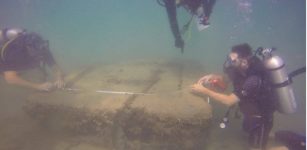 New Unique Ancient Underwater Finds In The Ports Of Caesarea And Acre
Archaeology | Aug 11, 2021
New Unique Ancient Underwater Finds In The Ports Of Caesarea And Acre
Archaeology | Aug 11, 2021 -
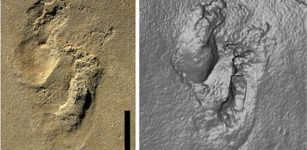 Controversial Discovery Of 5,7-Million-Year-Old Footprints On Crete Could Re-Write History Of Human Evolution
Archaeology | Sep 5, 2017
Controversial Discovery Of 5,7-Million-Year-Old Footprints On Crete Could Re-Write History Of Human Evolution
Archaeology | Sep 5, 2017 -
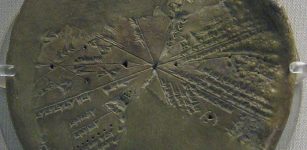 Assyrian King Ashurbanipal’s Great Library With Thousands Of Cuneiform Tablets
Civilizations | Dec 9, 2015
Assyrian King Ashurbanipal’s Great Library With Thousands Of Cuneiform Tablets
Civilizations | Dec 9, 2015 -
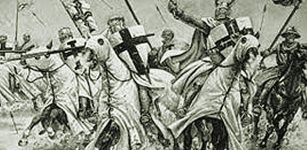 On This Day In History: Battle Of The Rhyndacus – Oct 15, 1211
News | Oct 15, 2015
On This Day In History: Battle Of The Rhyndacus – Oct 15, 1211
News | Oct 15, 2015 -
 Death And Afterlife In Ancient Egyptian Beliefs – Death As Transition To Another Reality
Ancient Traditions And Customs | May 28, 2018
Death And Afterlife In Ancient Egyptian Beliefs – Death As Transition To Another Reality
Ancient Traditions And Customs | May 28, 2018 -
 England’s Oldest Bible Reveals Surprising Hidden Secrets
Biblical Mysteries | Mar 19, 2016
England’s Oldest Bible Reveals Surprising Hidden Secrets
Biblical Mysteries | Mar 19, 2016 -
 Proof That Neanderthals Ate Crabs 90,000 Years Ago Is Another ‘Nail In The Coffin’ For Primitive Cave Dweller Stereotypes
Archaeology | Feb 7, 2023
Proof That Neanderthals Ate Crabs 90,000 Years Ago Is Another ‘Nail In The Coffin’ For Primitive Cave Dweller Stereotypes
Archaeology | Feb 7, 2023 -
 Monks Mound In Ancient Cahokia Was Not What Scientists Previously Thought – New Study
Archaeology | Jul 21, 2022
Monks Mound In Ancient Cahokia Was Not What Scientists Previously Thought – New Study
Archaeology | Jul 21, 2022 -
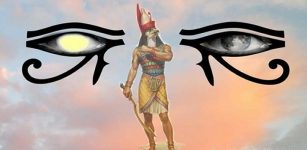 Horus – One Of The Most Important Ancient Egyptian Gods And Symbol Of Rulership and Justice
Egyptian Mythology | Jun 26, 2018
Horus – One Of The Most Important Ancient Egyptian Gods And Symbol Of Rulership and Justice
Egyptian Mythology | Jun 26, 2018 -
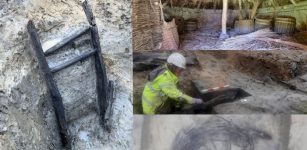 Incredibly Rare Iron Age Wooden Objects Discovered In 2,000-Year-Old Waterlogged Site In The UK
Archaeology | Jan 21, 2023
Incredibly Rare Iron Age Wooden Objects Discovered In 2,000-Year-Old Waterlogged Site In The UK
Archaeology | Jan 21, 2023 -
 Oldest Human Made Architectural Plans Detail Mysterious Desert Megastructures
Archaeology | May 18, 2023
Oldest Human Made Architectural Plans Detail Mysterious Desert Megastructures
Archaeology | May 18, 2023 -
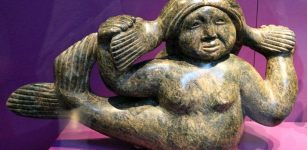 Sedna: Inuit Goddess Sacrificed By Selfish Father Fearing For His Own Life
Featured Stories | Jan 7, 2020
Sedna: Inuit Goddess Sacrificed By Selfish Father Fearing For His Own Life
Featured Stories | Jan 7, 2020 -
 On This Day In History: Stone Of Destiny Stolen From Westminster Abbey In London – On Dec 25, 1950
News | Dec 25, 2016
On This Day In History: Stone Of Destiny Stolen From Westminster Abbey In London – On Dec 25, 1950
News | Dec 25, 2016 -
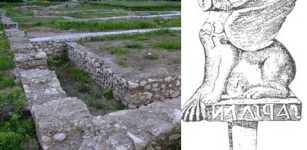 Mysterious Inscription On Naxian-Style Sphinx From Dacia Deciphered
Archaeology | Jan 15, 2024
Mysterious Inscription On Naxian-Style Sphinx From Dacia Deciphered
Archaeology | Jan 15, 2024 -
 Brooklyn Papyrus Reveals Ancient Egypt Had Far More Venomous Snakes Than The Country Today
Featured Stories | Oct 24, 2023
Brooklyn Papyrus Reveals Ancient Egypt Had Far More Venomous Snakes Than The Country Today
Featured Stories | Oct 24, 2023 -
 On This Day In History: Gutenberg Prints The First Bible – On Feb 23, 1455
News | Feb 23, 2017
On This Day In History: Gutenberg Prints The First Bible – On Feb 23, 1455
News | Feb 23, 2017 -
 Cuchulainn: Irish Mythical Hero And His Cruel Magical Spear Gae Bolg
Celtic Mythology | Jun 6, 2017
Cuchulainn: Irish Mythical Hero And His Cruel Magical Spear Gae Bolg
Celtic Mythology | Jun 6, 2017 -
 Archaic Hominins Began Sea-Crossings The Aegean Sea 450,000 Years Ago
Archaeology | Dec 22, 2022
Archaic Hominins Began Sea-Crossings The Aegean Sea 450,000 Years Ago
Archaeology | Dec 22, 2022 -
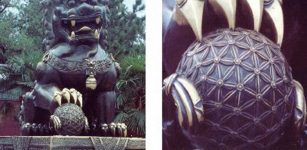 Ancient Symbol Seed Of Life Contains Hidden Secrets Of The Seven Days Of Creation
Ancient Symbols | Oct 8, 2017
Ancient Symbol Seed Of Life Contains Hidden Secrets Of The Seven Days Of Creation
Ancient Symbols | Oct 8, 2017 -
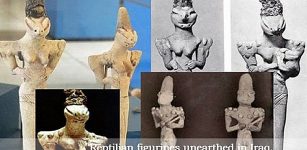 The Mystery Of The Serpent Seed
Biblical Mysteries | Jul 19, 2019
The Mystery Of The Serpent Seed
Biblical Mysteries | Jul 19, 2019

